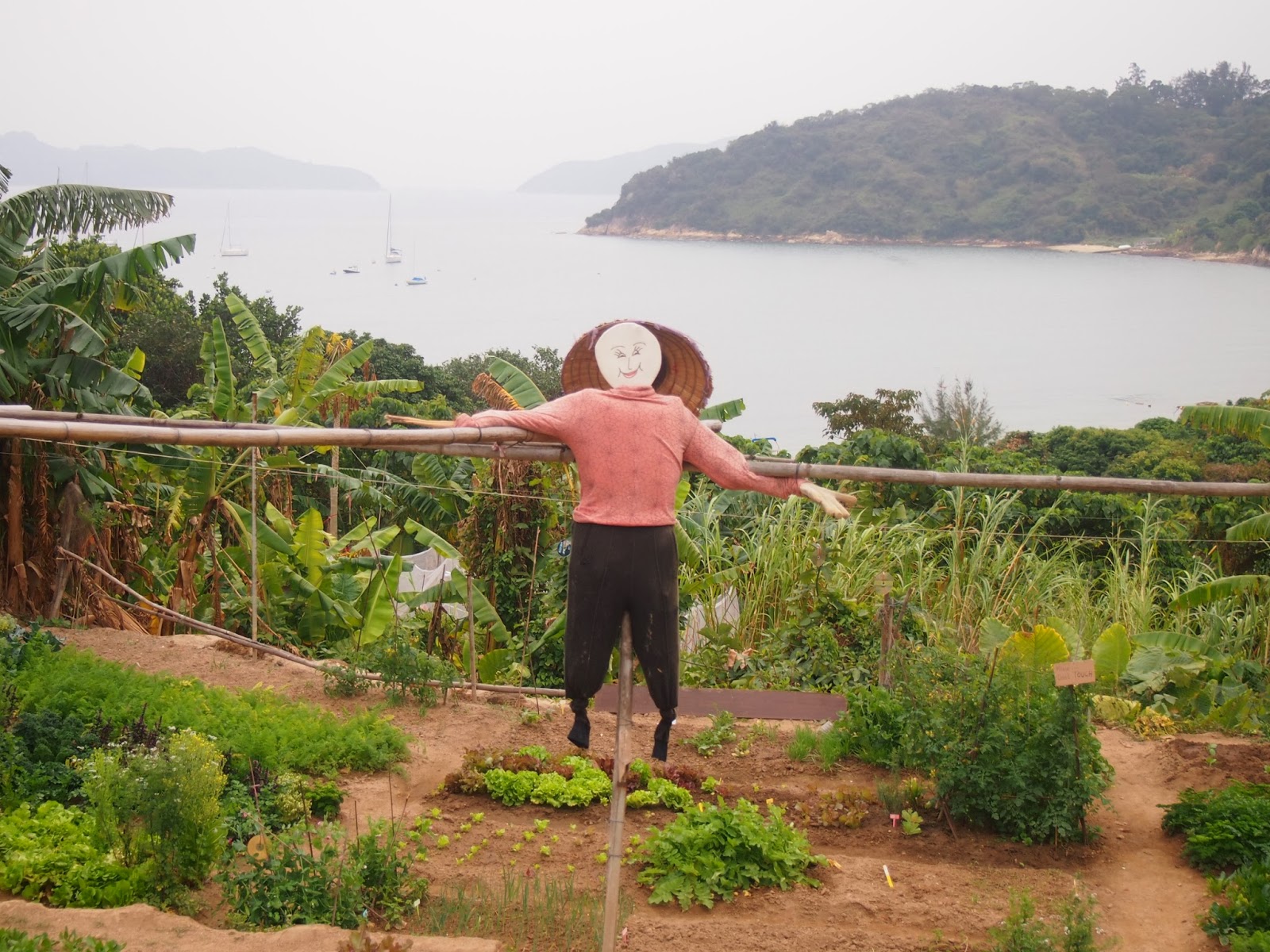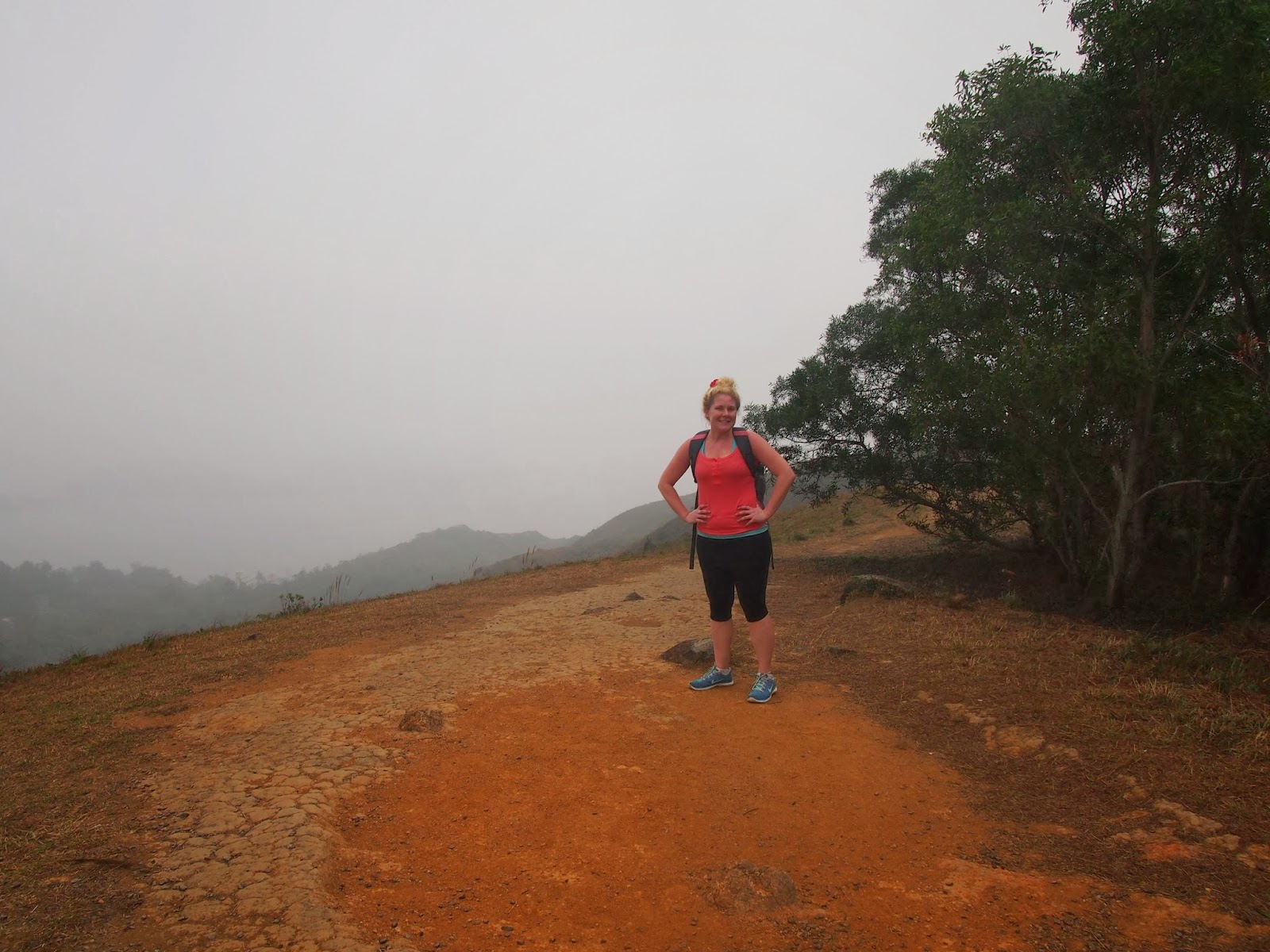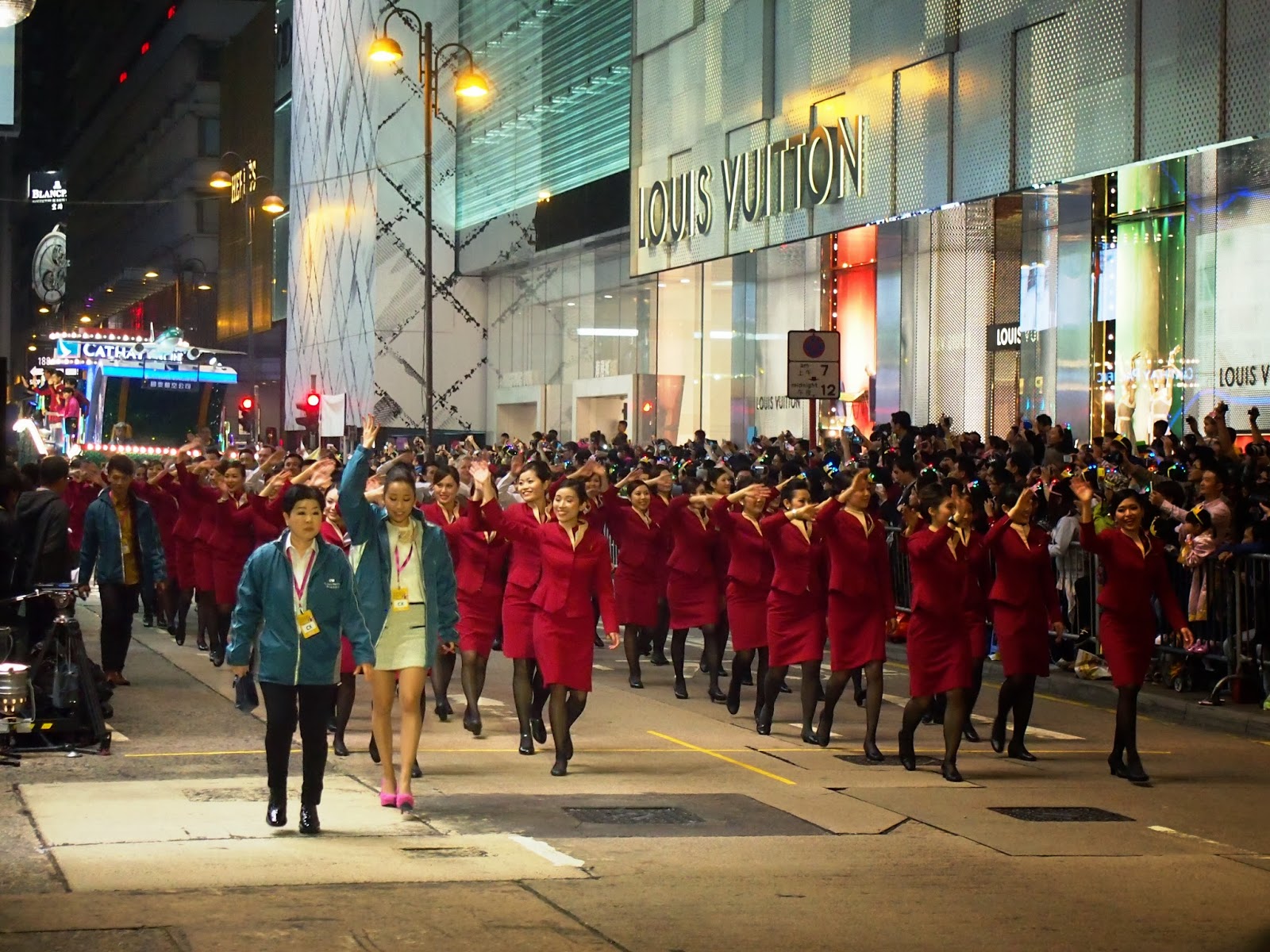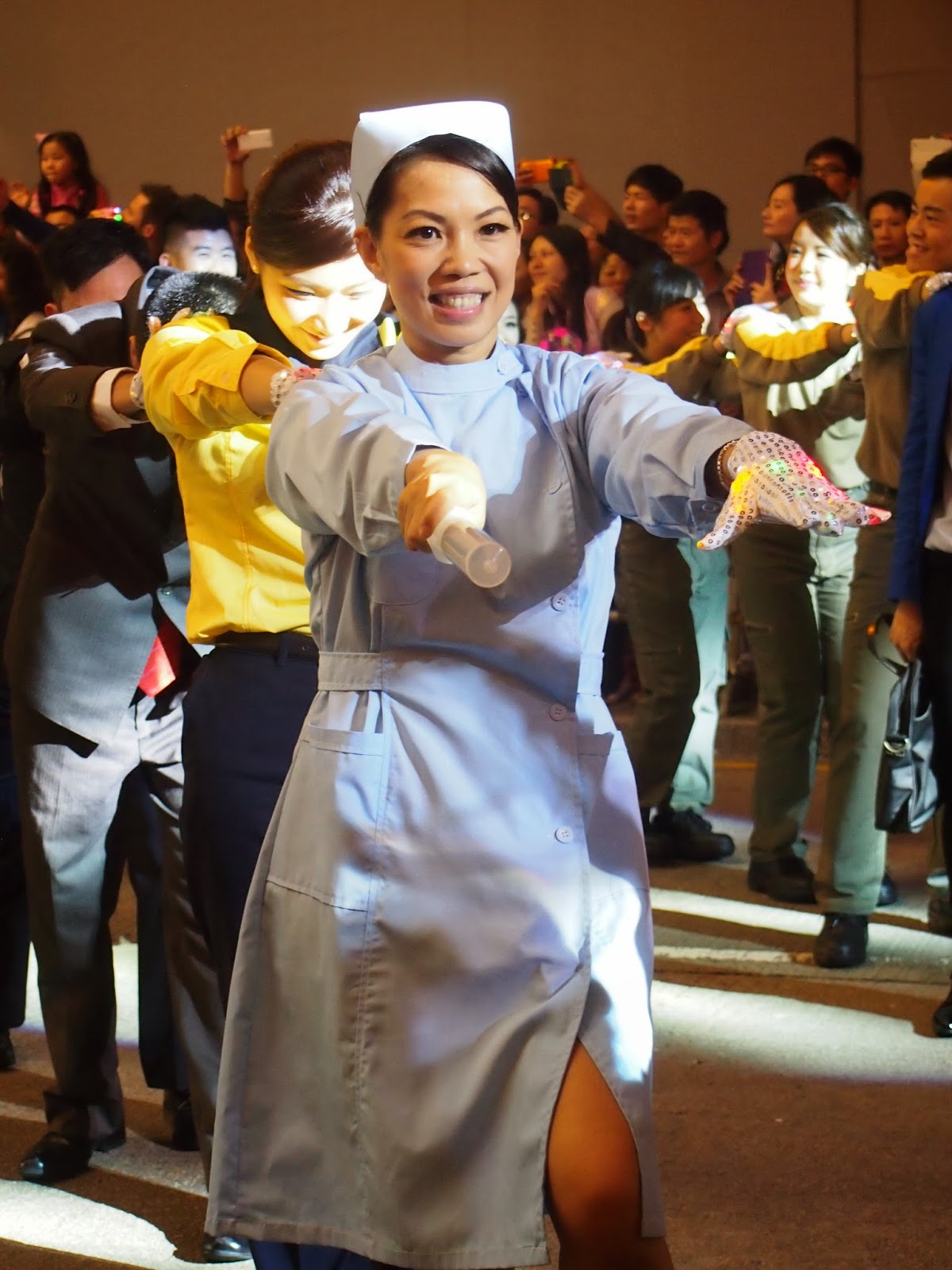After living in a place for four years, it's easy to think that you know all there is to know, that you've seen all there is to see and that you've done all there is to be done. The lesson I've learned over the past week is that as far as Hong Kong and I are concerned, there is still plenty to keep me from getting bored in the SAR.
My close friend Sarah is flying back to the UK for good in a couple of weeks. Like the many friends who have gone home before her (and the many more who inevitably will leave in the future) it's always sad to see someone special move on to the next stage of his or her life. So when Sarah asked if I wanted to join for a hike last Saturday, I jumped at the chance to spend some quality time with her.
There was a stage when hiking took up a great deal of my free time in Hong Kong. But for some reason, it's fallen by the wayside recently. It's absurd on my part, really, because this city is truly blessed with one of the most stunning natural settings of any metropolis I've yet encountered. The sheer number of potential trails is mind-boggling, and Hong Kong's "hikeability index" has got to be one of its greatest gifts to its citizenry.
But, like eating sushi, hiking is one of those things I have to be reminded that I love. It's funny, I'll almost never suggest going for sushi, and rarely take it upon myself to seek it out. Then, as soon as someone has steered us that way and I begin to chow down, I become obsessed. The same is true of hiking. I'm almost always invited to join a hike as opposed to planning it myself, but it's really one of my favorite ways to spend my time.
The route Sarah selected was the well-trod path between Discovery Bay and Mui Wo, on Lantau Island. Now, I've spent many happy days in each of these places, but I'd never made the effort to trek from one to the other. It's probably among the ten most frequently mentioned hikes out here. In fact, I always hear people talk about it, so I suppose it's surprising I had never done it before. Up bright and early, I made my way to Central to meet Sarah at the pier. The zippy ferry transported us to DB in a jiffy and off we went on our adventure.
Discovery Bay is an expat enclave filled with families, dogs, chirping birds, trees, seaside decks, beaches, luxurious high rises and Western restaurants spilling out onto piazzas. So it was absolutely astonishing how instantaneously it all disappeared behind us as we started our walk, passing humble and traditional houses, farms and temples.
At times, the path was steep but every step of the way was worth it. The views out over the sea were lovely, as were the telltale signs of nature surrounding us, like birds' nests, waterfalls and the lush woodlands.
Sarah had mentioned that there was a monastery along the hike, but I just assumed it was a Buddhist one. When I saw the Stations of the Cross nailed to several trees along the way, I realized it was actually a Christian monastery we would be passing. There was a retreat center and an adorable little church as well, quite a surprise to find secluded up there.
Just past the church was an old abandoned hilltop with dilapidated stone walls, a garage and several other curious buildings. We couldn't quite figure out what the place had once been, but it was certainly interesting exploring the various structures.
The mist shrouded the hills and bays as we finally crested the mountain and began our descent in Mui Wo. Mist is a funny thing... In photos it never comes out quite accurately, giving the impression that our hike was dreary and dark. The reality was that it added an element of mystery to the adventure. I remember remarking to Sarah that it was actually perfect weather for a hike, since it would have been uncomfortable had it been warmer and sunnier.
Down in Mui Wo, we browsed our old favorite used book store and had lunch at our old favorite eatery, Bahce Turkish Restaurant near the ferry pier. Our timing was impeccable, for just as we finished the meal, a ferry was getting ready to depart, whisking us back to Hong Kong Island.
On Monday afternoon, I had to be in Tsuen Wan, a satellite town that is pretty far out in Kowloon. In early 2010, I had visited a museum there, but I hadn't been back since. I figured there might be something else in the area that would be worth seeing since I'd be out that far anyway, and I read about two nearby Chinese temple complexes online.
I actually decided to pay a repeat visit to the Sam Tung Uk Museum first, because it's really a gem of a place and I hadn't been in four years. The museum is an actual walled village that has been meticulously restored and filled with antique furniture and farming tools. Exhibits in various houses try to explain different aspects of village life in the days of yore, and it's a fascinating spot. Small and manageable, the museum only takes around forty minutes to thoroughly explore, but it's a great firsthand look into a way of life that's all but vanished under modern Hong Kong.
The new places I had researched that morning were uphill. I thought I had known exactly how to get to them, but what I didn't realize was that the map I committed to memory included many roads that were actually inaccessible highway blocked by high walls! So I walked around until I figured out a new way to reach them. Eventually I found myself in the middle of a small town that stretched up the hill, and a helpful sign with an arrow pointing the way to my destination.
Simply walking up through the hillside town was worth the extra effort. It took me back five years to the favela I visited in Rio de Janeiro. Obviously this was far less vast and colorful, but the simple homes built so close to one another definitely reminded me of the Brazilian village.
When I arrived at the Yuen Yuen Institute, I was struck by the crowds on a drizzly Monday afternoon. Of course, it was still part of the fifteen day Chinese New Year celebration, and so there were hundreds of people burning incense and praying for good fortune.
Just next door was another complex of temples that truly blew me away. Simple called the Western Monastery, it was a magnificent collection of pagodas, ponds, bridges and worship halls, complete with red-and-yellow robed monks wandering about.
I don't know how or why this place isn't on the tourist radar, but I'd certainly never heard of it before. It was a visual feast, and I highly recommend making the effort to visit.
On Wednesday morning, I took the MTR over to Kwun Tong, which is another area of Kowloon I have left unexplored. On the surface, there doesn't seem to be much special about Kwun Tong. It's an industrial zone with scores of charmless warehouses and towers. However, a quick attempt to scratch the surface reveals a wealth of things awaiting discovery.
The Kwun Tong Waterfront Promenade is a work in progress, but the portion that is completed is very nice indeed. Of course, the weather always seemed just on the cusp of a downpour, so it was not necessarily an ideal day for a stroll along the harbor. Still, I could easily imagine picnickers, fishermen and joggers all enjoying the open space.
Kwun Tong also has two piers offering frequent ferries across to two points on Hong Kong Island: Sai Wan Ho and North Point. I walked up to the North Point pier just to find out the times of the ferries back, and stumbled upon an incredibly intriguing exhibit. I don't quite know how to describe it because it was such a hodgepodge of fascinating things. I guess the best way to summarize its theme is to say that it explored man's relationship with nature, particularly through cities (with an obvious emphasis on Hong Kong) mixed in with a bit of modern art. I must have spent over an hour there, and I would love to go back.
Of course, had I realized a ferry link existed, I would have steered clear of the train that morning. You can bet I returned to the island via boat. And during the ride, I got my first up-close look at the new cruise terminal fashioned out of the old runway of Kai Tak Airport. Kai Tak closed in 1997 but old timers still talk about what is was like to land on its notorious runway jutting out into Victoria Harbour. They say you go so close to the nearby buildings that people would wave from their apartment windows and passengers could even see what was showing on the television sets inside the flats!
The new cruise terminal is very striking in design, and I'm glad the historic runway will continue to welcome people to the SAR, now by boat instead of by airplane.
Stepping off of the ferry in North Point, I found myself near a wet market chock full of fresh seafood. In one tank were the largest geoducks I've seen in awhile. In another—and this was a first for me in Hong Kong—were several live octopi! I was on such a Hong Kong high that afternoon that I walked all the way home to Happy Valley from the pier.
But, man, is it cold here! Freezing, actually. Seriously, this is the coldest I've ever experienced Hong Kong. As you know, the Winter Olympics are currently taking place in Sochi, where it is warmer than here! That's a crazy "fun" fact, because (A) they are the WINTER Olympics and (B) I live in Hong Kong. Seriously, I want you to stop reading and just take a second to think about that. We have been very cold lately.
On Friday, fresh on the heels of three days' worth of new Hong Kong experiences, I decided to try to find something new to do on Hong Kong Island itself. I opened my trusty Frommer's guide for inspiration, and started thumbing through its pages, eventually deciding to finally walk along Bowen Road.
Of all the things I've left undone over the past four plus years, perhaps most shocking of all was that I had never been up to Bowen Road. Even tourists with only a few days in Hong Kong often find the time to walk or jog along this paved trail overlooking the city. And many expats with dogs often take them there for walks. I'm not really a "jogger" nor do I have a pooch in need of exercise, but still, that's no excuse to have never paid a visit.
Anyway, I walked through Wan Chai first, rode my "secret" elevator in the Hopewell Center, left the building via the Kennedy Road exit, and then started my steep ascent along the Wan Chai Green Trail. This path intersects Bowen Road at just about its midpoint, so in order to walk the entire stretch, I made my way westward first, then retraced my steps back to the middle, continued on to the eastern end, and finally returned to my starting point once more to retreat back down into Wan Chai. So ultimately, I walked the whole thing twice that day. Thankfully, for the first time in almost a week, it was somewhat clear and sunny, a welcome relief from the recent chills.
I especially liked the view I got of Frank Gehry's stunning Opus Hong Kong. The master architect is famous for his striking buildings like Bilbao's Guggenheim Museum, New York's 8 Spruce Street (which appears as if it's being rippled by the wind) and my favorite, L.A.'s Walt Disney Concert Hall. I'm thrilled that Hong Kong has an example of his creativity, and the view of Opus from Bowen Road is one of the best vantage points I've yet found.
Opus looks as if a normal twelve-story apartment tower had been grabbed by some giant and twisted slightly. When Jackie was here visiting in 2012, she thought it looked like something out of a Tim Burton movie. Whatever Gehry's inspiration or intention, I just love the place. Sadly, I'll probably never get to set foot inside, as it's one of Hong Kong's most exclusive addresses, containing the single most expensive apartment ever sold here, which went for a whopping HK$470 million (or US$61 million)!
One of the famous features of Bowen Road is a large boulder called Lover's Rock. There is a temple just below the rock, and lots of inscriptions and hearts drawn onto the stone itself. They say Lover's Rock has the power to grant happy marriages and fertility, but I was more concerned with the view of the harbor and city from this high perch. Still, I did find it slightly ironic that I was making my first visit to this Hong Kong attraction on St. Valentine's Day. And, alas, alone!
It certainly was a great afternoon up there, and I lingered for a long while soaking up the views before finally heading back down.


































































































